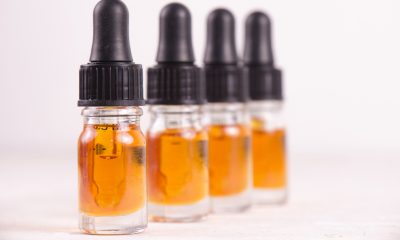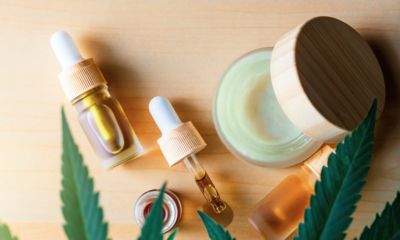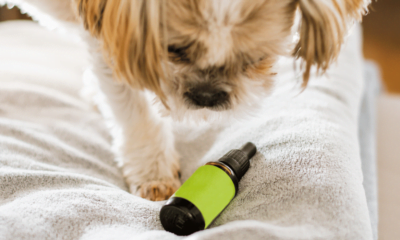As oral cannabis solutions become more popular, Michael Sassano CEO and founder of SOMAÍ Pharmaceuticals, explains how to get the most out of your product by dosing correctly.
In Europe, there is a good chance you will try an oral cannabis solution and not like it. The two top reasons for dissatisfaction are it took too long to provide relief, and the feeling was too strong.
With proper dosing guidelines and more advanced products, there will be a greater swath of patients who prefer oral solutions to smoking flower. In fact, smoking flower has decreased in popularity in Canada while more cannabis consumers take an oral solution and use products like vaporizers or concentrates.
Here are four considerations to ensure you get the most from your oral cannabis formulation by properly dosing.
1. Incrementally Increase Dose to Pace THC Tolerance Levels
Over time and regular use, patients build up a tolerance to oral cannabis solutions. It is always best practice with oral solutions to start at a lower dosage and gradually increase the dose.
Starting with 2.5 mg of THC is a good first dose when administering oral solutions. 2.5mg is a very mild dosage, and it’s best to begin acclimating to oral solutions by taking a lighter dosage at night and seeing how your body reacts. Later, you can add another dosage of 2.5mg in the daytime to see how you feel. As you become more comfortable and seek increased relief, you can move up to 5mg doses.
Starting low and incrementally pacing up THC levels will ensure you properly learn how to handle the oral solutions and manage the symptoms you seek to fix. Depending on your tolerance level, initial doses may seem very light, like they are not working or relief is taking too long. But stay the course, and don’t be tempted to increase dosage without getting used to lower dosages for a few days first.
2. Onset Timing for Oral Cannabis Formulations is Varied
Most cannabis consumers are used to the immediate effects and relief that come within seconds of smoking flower. A benefit of combusting and inhaling cannabis is choosing not to take another puff if you’ve assessed you have enough in your system. By contrast, oral solutions will take effect from 30 minutes to an hour, depending on your metabolism and what you have eaten recently. The cannabinoids must pass through our entire digestive system and eventually get processed in the liver before entering the blood system to take effect.
Once you ingest an oral solution, it is best to avoid the temptation to take more because you don’t feel anything within the first hour; this is a sure way to take too much. Be patient and go slow with lighter dosages when first starting. Taking an oral solution elicits different effects than smoking, and the body needs to get used to the feeling.
The effects of cannabis oral solution may peak 30 minutes after the first feelings occur and have a nice steady feeling until it tapers off around two hours later. Higher dosages may last much longer — up to 6 hours — so learn the onset timing of your body to regulate your intake better. Most U.S.-style ingestible cannabis products have a faster onset, taking effect in as little as 15 minutes and giving people relief in a more appropriate timeframe.
3. Cannabinoid Bioavailability is Influenced by Many Factors
Simple oral solutions with medium-chain triglyceride (MCT) oil may only enable 4 to 12% of the total cannabinoids to enter the bloodstream after the digestive system breaks down the cannabinoids. Cannabinoid absorption can be influenced by many considerations, from sex to weight, when you last ate, and various body factors. It could also indicate that better excipients can be used instead of MCT oil to increase absorption.
Regardless of the reasons, new oral solutions consumers need to find the proper dosage based on their body type and other factors, as previously discussed. Again, starting at lower dosages will help you enjoy oral solutions better than smoking flower.
4. Combining CBD or Minor Cannabinoids with THC
The most common cannabinoid besides THC in oral cannabis formulations is cannabidiol (CBD), but other minor cannabinoids may also be present.
THC:CBD ratios help enhance the THC’s effects, and CBD also has its own anti-inflammatory properties. The most common ratio is a THC and CBD 1:1 mix. More CBD than THC is also very common; 20-25mg of CBD is considered a suitable daily dosage to appreciate CBD’s endocannabinoid system effects fully. More THC than CBD also positively affects those who need higher THC dosages, particularly for pain relief.
It is exceptionally complex to describe minor cannabinoids’ interactions, but they may hold the key to maximizing the effects of different extracts. As a few examples, an extract with THC and CBD with minor cannabinoids like
- Cannabinol (CBN) could help with appetite, bacterial inflammation, and sleep
- Cannabichromene (CBC) could provide more pain relief, help with nausea, and inhibit cancer cell growth
- Cannabigerol (CBG) could help with colitis, anorexia, and even sleep
It’s essential to find your ideal THC:CBD ratio and the right minor cannabinoid mix.
Conclusion
If you are patient and start with lower dosages to see how your body reacts to THC and CBD, you will eventually get to the right minor cannabinoid mix, perhaps even using different solutions during the night and day. So many factors will influence the right therapy for you.
It starts with lower oral cannabis formulation dosages and watching your onset times and absorptions to understand a proper daily regime. Mature markets have slowly gravitated towards ingestible formats, and as technology and products improve, so will the adoption of oral solutions.

Michael Sassano, CEO and founder, SOMAI Pharmaceuticals
Michael Sassano is celebrated in mainstream business and biopharma media as an international authority on developing large-scale cannabis infrastructures throughout the world and the most advanced pharmaceutical cannabinoid products. Michael is also widely respected for successfully predicting long term cannabis market trends and movements, which he generously shares in many forums. He is well known for leading a merger of the cannabis cultivation company he built and operated, called Solaris Farms, with The Sanctuary.
Over the last few years, Michael has shifted focus to his role as CEO and Chairman of the Board for SOMAÍ Pharmaceuticals LTD, a European pharmaceutical and biotech company centred on manufacturing in Lisbon, Portugal and distribution of EU GMP-certified cannabinoid-containing pharmaceuticals throughout EU.
Home » Comment » Four things to know for properly dosing oral cannabis formulations

 News6 months ago
News6 months ago
 Science5 months ago
Science5 months ago
 Industry6 months ago
Industry6 months ago
 News6 months ago
News6 months ago
 News5 months ago
News5 months ago
 Health5 months ago
Health5 months ago
 News5 months ago
News5 months ago
 Health3 months ago
Health3 months ago













